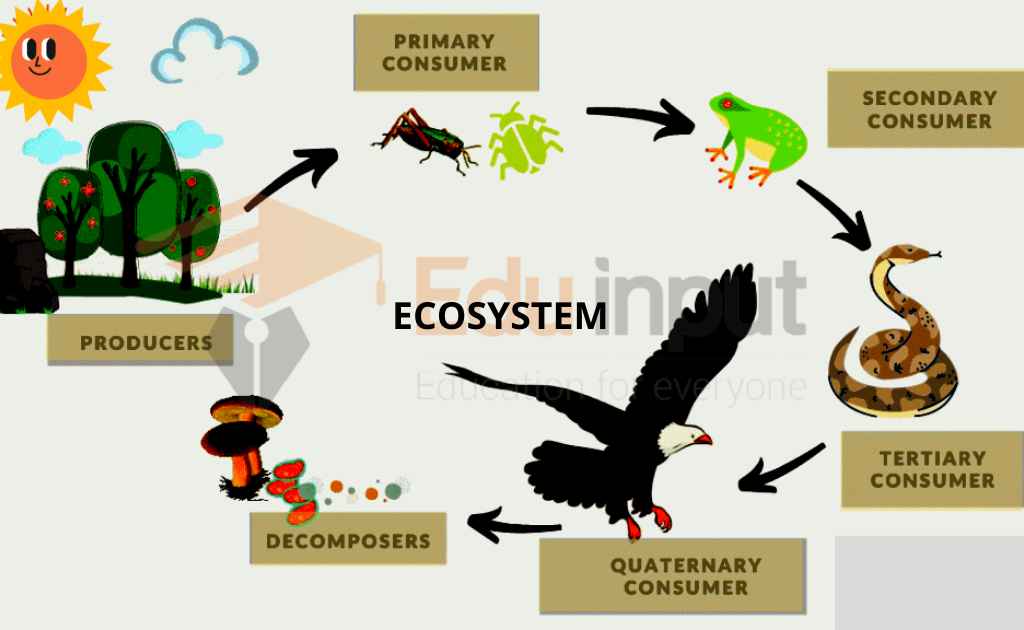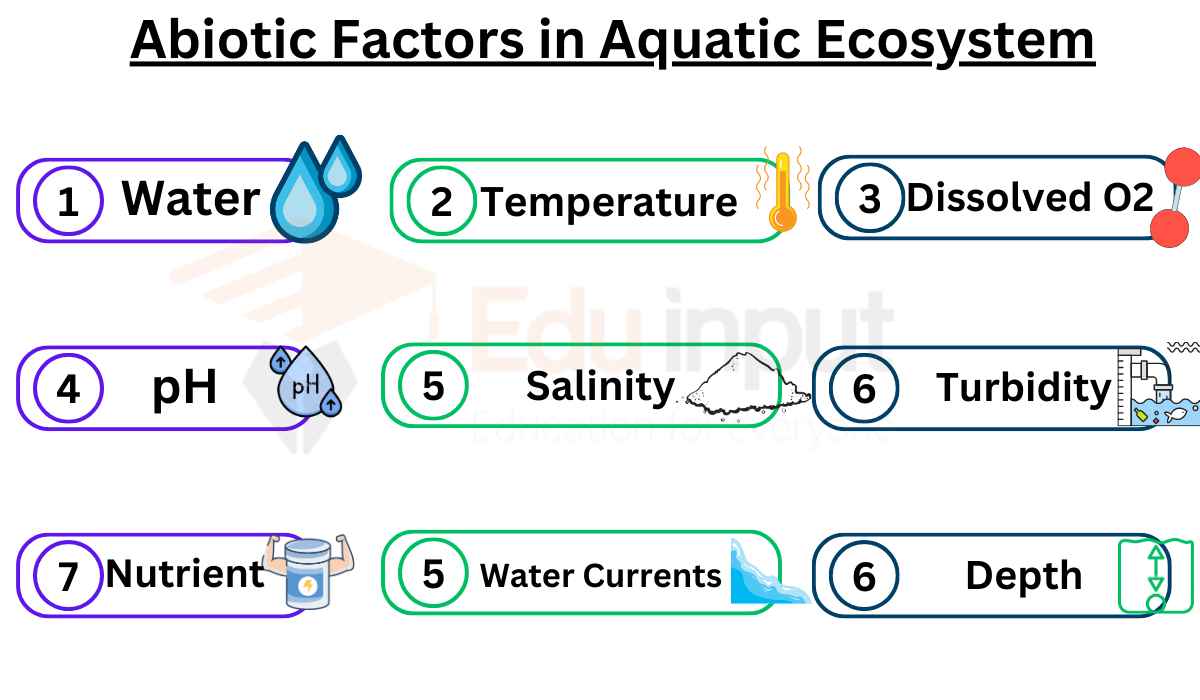What is an Ecosystem?-Components and Levels
A biological community together with its associated abiotic environment is called an ecosystem. An ecosystem is a major unit of ecology. Organisms interact with their environment within an ecosystem.
The eco part of the word is related to the environment and the system part means a collection of related parts functioning as a unit.
What is an Ecosystem?
An ecosystem is also a community of organisms with a well-balanced relationship among the components of its living resources, soil, water, and nutrients. In this way, an ecosystem is a complex system containing many elements that work together to support life.
An ecosystem has a tightly woven web of relationships between organisms and their environment. For example, the Indian rhinoceros beetle Titianognathus gibbous has a symbiotic relationship with the Borassus aegipan tree.

The beetle’s habitation site is the aegipan’s seedling cavity, where it lives and ultimately dies. The Borassus tree then absorbs the beetle’s exoskeleton to provide its protection against predators. As the borassiassegipan relationship progresses, both organisms benefit in ways they could not accomplish on their own.
There are many types of ecosystems, each with its characteristics. An urban ecosystem consists of living organisms – such as humans, animals, birds, and insects – that live in or around cities. A wetland ecosystem consists of organisms found in bodies of water that are permanent or intermittent. A desert ecosystem consists of various types of fauna – such as sandworms, scorpions, and snakes – that inhabit arid areas.
An oceanic ecosystem consists of various types of marine life found in oceans or on the ocean floor. An alpine or mountain ecosystem consists of various types of flora – such as ice rooms or snow crystals – that grow in Alpine or mountain regions.
Maintenance and Regulation in Ecosystem
An ecosystem is a self-regulating system that maintains a stable balance between the number of organisms and the number of resources. For example, when more beetles enter an Indian rhinoceros beetle colony, more trees protect themselves by becoming more beetle-friendly.
This self-regulation helps organisms maintain a stable environment within an ecosystem. It prevents ecosystems from destabilizing and leading to chaos; instead, it promotes stability and life itself within an environment that sustains all life on earth.
Based on these ideas, an ecosystem is a complex system containing many elements that work together to support life-sustaining processes within nature. The word can be used in a variety of ways, but it is most often used to describe the complex network of organisms in an area of the earth’s surface.
Components Of Ecosystem
The ecosystem consists of two basic components;
a) The living or biotic component:
b) The physical or abiotic components:
Levels Of Ecosystem
The ecosystem has many levels.
1. Individual Organism
It includes man and other species. They influence the physical environment.
2. Population
A population is a collection of inter-breeding individuals of a particular species living in the same geographic area. The population represents the next level of the ecological system. The various kinds of an organism that inhabit an ecosystem constitute populations.
The populations of animals and plants do not function independently in the ecosystem. Some populations compete with others for resources such as food, water, or habitat. In some cases, one species is the food source for another. Two populations may mutually benefit each other. One population can be described in relation to its members, growth rate, age distribution, and reproductive capacity.
3. Community
All populations in an ecosystem are called a community. Populations in a community are interconnected. Individuals of these populations interact with each other and interact with individuals of other species to form a community.
4. Biomes
The major regional ecological communities of plants and animals are called biomes.
Each biome consists of plants and animals. These plants and animals form a climax community.
Each biome has uniform vegetation like grass or coniferous trees. The biome of earth combined to form the planetary ecosystem. There are 6 major terrestrial biomes:
• Forest
• Grassland
• Woodland
• Shrub land
• Semi-desert shrub
• Desert
Who defined ecosystem?
In 1935, Sir Arthur G. Tansley coined the term ecosystem.
What is the function of the ecosystem?
Ecosystem is the basic unit of ecology. It helps to regulates the ecological process and facilitates life systems.
Which is the most important element of ecosystem?
Producers and Decomposers are the most important elements of an ecosystem.

 written by
written by 





Leave a Reply